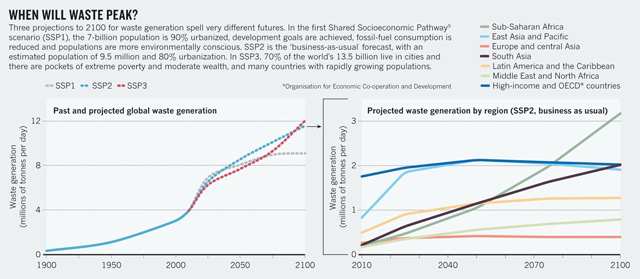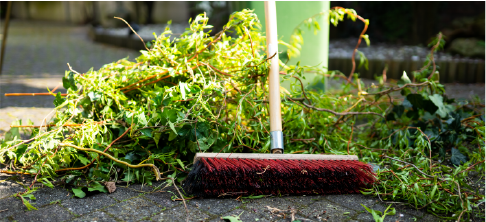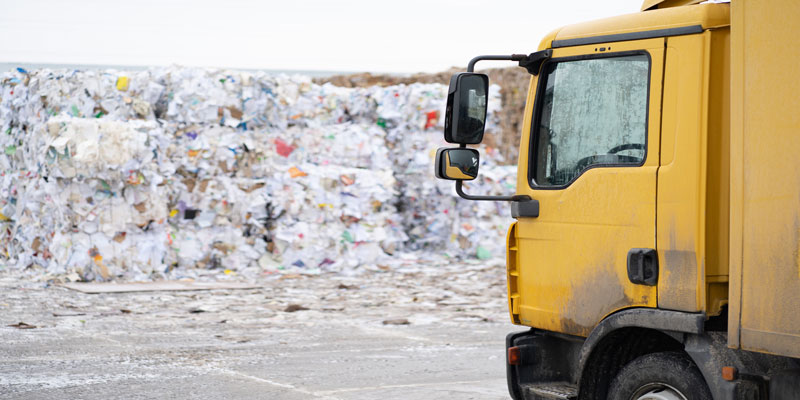
Updated August 2, 2021
Did you know humans generate 3.5 million tons of trash each day around the world? That’s an unfathomable amount. Worse yet, experts say it could double by 2025 and reach 11 million tons per day by 2100.
The Research
A recent article published in Nature, an international journal of science, by a team of environmental experts examined many different factors to piece together pretty accurate estimates of future global waste output.
The experts involved in the research include Daniel Hoornweg, associate professor of energy systems at University of Ontario Institute of Technology; Perinaz Bhada-Tata, a solid waste consultant based in Dubai; and Chris Kennedy, a professor of civil engineering at the University of Toronto.
The team compared various factors, including population growth and urbanization, to come to its conclusions. Three scenarios (referred to as “shared socioeconomic pathways (SSP)”) were derived from the data collected:
- SSP1: An idealized situation where the vast majority of the world’s 7 billion+ people take great care in recycling, reusing and reducing waste output. This scenario yields an estimate of about 8.4 million tons of waste generated per day by 2075.
- SSP2: This middle-of-the-road estimate, and probably the most realistic of the three, represents very little change in the way we live our lives in the future compared to today. Growth toward sustainable living practices and the “3 R’s” remains slow and steady. SSP2 estimates waste output at 11 million tons per day by 2100.
- SSP3: The worst case scenario factors in a world where acute poverty and poor education reign supreme, particularly in developing countries. Urbanization and environmental activism are low. Couple this with an estimated population of 9.5 billion people by 2100 and you have a recipe for an environmental disaster. In this scenario, the team estimates waste output to reach 13 million tons per day by 2100.
The studies found sub-Saharan Africa an area of particular concern. This region is on a path toward producing 3.2 million tons of trash per day by 2100, or about one-third of the world’s total waste output. A focus on this region of the world, in terms of environmental education and support, is essential now an in the future.

The researchers concluded that “waste production must peak this century.” If waste output continues to climb steadily beyond the year 2100, the results could be catastrophic. The global population will continue to grow – there’s no way around that. So we must find a way to somehow decrease per capita trash output or else we’ll be literally living in garbage.
What cities are helping to turn things around?
Cities in the U.S. are taking action to help deter waste from ultimately calling a landfill its final resting place. San Francisco has taken great strides to increase waste diversion rates, and announced in 2012 its efforts helped the city achieve an 80% waste diversion rate. That bests any other city in North America.
San Francisco isn’t the only area in the U.S. where waste diversion is a priority. Places like Austin, TX; the State of Massachusetts; Maryland; Boulder, CO; and Seattle, WA have all drafted some sort of “zero waste plan.” These are just a few of the many cities and states that have at least started drafting zero waste plans. Most plans are set to be in full swing between 2020 and 2040, so it’s no immediate fix.
Other countries, such as Scotland, have adopted zero waste plans. “Concept” cities like Masdar City in UAE claim be the future of “green” city design.
These efforts certainly help, but it’s really going to take a massive effort that starts with you and me. We must find a way to reduce the estimated 4.4 lbs. of waste generated per person per day in the U.S.
What can we do?
A little goes a long way. Let’s look at an example of how this works:
The U.S. population is around 318 million people. If each person were to reduce the amount of waste generated by just 1 lb. per day, we’d be reducing landfill waste by 871,232 lbs. per day. That’s a lot of trash!
It can be done. There’s a family of four living in Ontario, Canada that managed to reduce the amount of household garbage generated for one year down to a single trash bag! The VanderMeer family ramped up their recycling and composting efforts and totally revamped their purchasing habits at the grocery store to avoid packaging waste. This may be an extreme example, but it shows that it is possible to reduce waste output to near-zero in some cases.
You don’t have to take such drastic measures as the VanderMeer clan did, but becoming more environmentally conscious is something we can all do.
Time to go green…
- Start by recycling more, whether it be curbside or at a drop-off center, make a commitment to divert recyclables away from trashcans.
- Begin composting at home. Compostable items make up more than 50% of municipal waste, so there’s plenty of stuff to compost. This includes vegetable and fruit scraps, paper products, yard waste, untreated wood, eggs shells, coffee grinds/filters, and much more.
- Rethink your purchasing habits. Instead of buying packaged foods, buy fresh. It helps reduce packaging waste, and the food is much healthier for you and your family anyway. Also, purchase used instead of new, such as at garage sales, thrift shops, secondhand stores, Habitat ReStores, etc.
- Teach your kids about living a more sustainable lifestyle. After all, kids are the future. They’re the ones who’ll be around in 2100 facing the potential environmental calamity before us.
Sources: Nature, also Ars Technica and Treehugger


